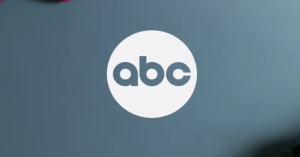June’s full moon will be the last supermoon of 2021, and it is definitely worth checking out for yourself. The first half of this year has been a treat for stargazers — amateur or otherwise — and Thursday, June 24 will be the grand finale, in a way. Here is how you can get your best glimpse of the “Strawberry Moon.”
According to a report by CBS News, the June full moon will reach its peak illumination on Thursday, June 24 at 2:40 p.m. ET. Sadly, that means it won’t be visible to the naked eye in North America, but it will still be bright and powerful that evening. Experts told the outlet that people can get a good look at the Strawberry Moon any time from the early hours of Wednesday morning to the early hours of Saturday morning simply by stepping outside when the sky is clear. To help you plan for it, TimeAndDate.com has the forecast for moonrise and moonset throughout the week.
Videos by PopCulture.com
For those expecting an enhanced view, you can also check out the full moon on the Virtual Telescope Project’s livestream here. It will show the full moon over Rome, Italy on Thursday, June 24 starting at 3 p.m. ET — shortly after the “peak illumination” time.
June’s full moon was named the Strawberry moon by Native American tribes, reportedly because they would traditionally harvest strawberries throughout North America during this time of year. The Farmer’s Almanac has more details on this nickname, noting that it does not refer to the tint or color of the moon.
The lunar cycle does not correspond directly with the solar calendar, but typically the strawberry moon is the last full moon of spring or the first one of summer. In this case, it comes not long after the summer solstice of 2021. Other nicknames for this moon include the blooming moon, green corn moon, hoer moon, birth moon, egg-laying moon and hatching moon, honey moon and the mead moon.
Whatever you call it, the June full moon is sure to be a spectacle, though NASA’s Gordon Johnston said that the details can get complicated. In an article back in April, he explained that astronomers differ in their definition of a supermoon. He said: “For 2021, some publications consider the four full Moons from March to June, some the three full Moons from April to June, and some only the two full Moons in April and May as supermoons.”
Technicalities aside, this will be a great week for those with telescopes to head outside in the evening for a glimpse of a rare astronomical spectacle. Check your local forecast for the best time to ensure visibility.
Most Viewed
-

NEW YORK CITY – DECEMBER 19: "Toil and Trouble" – Elsbeth is thrown into the world of television after the showrunner of a long-running police procedural is brutally murdered in his office, and although it appears to be the act of a disgruntled fan, she begins to suspect the show's longtime star Regina Coburn (Laurie Metcalf) who yearns for artistic fulfillment. Meanwhile, Judge Crawford (Michael Emerson) continues to be a thorn in Elsbeth's side, on the CBS original series ELSBETH, Thursday, Dec. 19 (10:00-11:00 PM, ET/PT) on the CBS Television Network, and streaming on Paramount+ (live and on demand for Paramount+ with SHOWTIME subscribers, or on demand for Paramount+ Essential subscribers the day after the episode airs). Pictured (L-R): Carrie Preston as Elsbeth Tascioni and Carra Patterson as Kaya Blanke. (Photo by Michael Parmelee/CBS via Getty Images)







